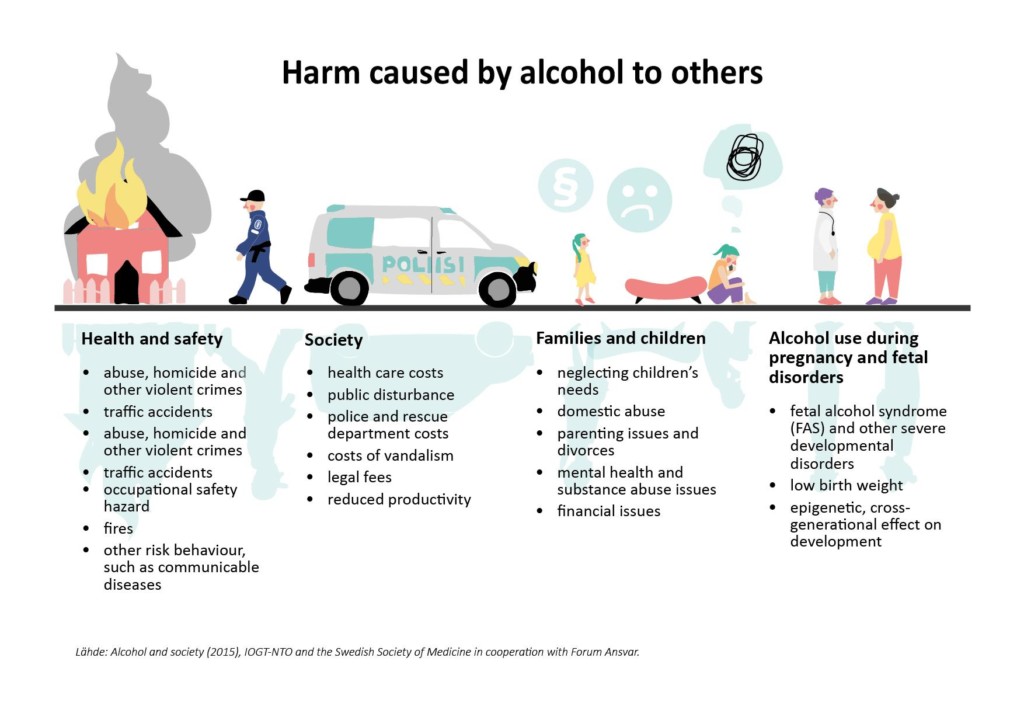Alcohol
Alcohol is the most commonly used intoxicating substance in Finland: most Finns consume alcohol at least sometimes. Alcohol consumption causes health harms, social harms and it has a negative impact on the economy. Therefore, alcohol availability is regulated.

Alcoholic beverages are beverages that contain ethanol, which incapacitates the central nervous system. Alcohol causes both psychological and physical addiction.
In the Finnish culture, alcohol is part of many social situations. Only approximately 12–15 per cent of the adult population does not use alcohol.
It is estimated that each year, alcohol causes costs amounting up to EUR 2 billion for society, as higher healthcare costs among other things. Read more about alcohol-related harm.
The Alcohol Act prohibits the possession of alcoholic beverages by those under the age of 18. Alcohol has stronger effects on a young person than on an adult as a young person’s blood alcohol content can rise very rapidly, which may, in the worst case, lead to poisoning. Alcohol consumption among minors has decreased significantly in the 2000s.
Alcohol consumption is known to be linked with at least 200 diseases, such as cancers, memory disorders, heart diseases, liver diseases, hypertension and impaired immunity.
In addition, alcohol may cause excess weight and aggravate mental health problems, such as depression and anxiety. In 2018, alcohol-related diseases and alcohol poisoning caused 1,683 deaths. Alcohol may have harmful effects on the foetus in all development phases.
The World Health Organization WHO’s three key recommendations in reducing alcohol-related harm are price control, limitation of availability and restrictions on alcohol advertising.
People often think that most of alcohol-related harm is caused by alcohol addiction. However, most alcohol-related harm actually appears already when alcohol is used at the risk limits.

The moderate-risk level is seven weekly servings for working-age women and 14 weekly servings for working-age men. The high-risk level is 12 or more weekly servings for women and 23 or more weekly servings for men. Alcohol consumption is considered risky when these limits are exceeded regularly.

For approximately half a million Finns, alcohol consumption exceeds the risk limits. If you are concerned about your alcohol consumption, you can compare it with the risk limits. You can also analyse your alcohol consumption with the AUDIT test.
In addition, you should pay attention to your health. Early symptoms of excessive alcohol consumption include, for instance, stomach problems, difficulties in sleeping and high blood pressure. You can contact your health centre, for instance, where you can get a doctor’s referral to substance abuse treatment, if necessary.
Sources: AddictionLink, THL, Statistics Finland and Duodecim Terveyskirjasto

